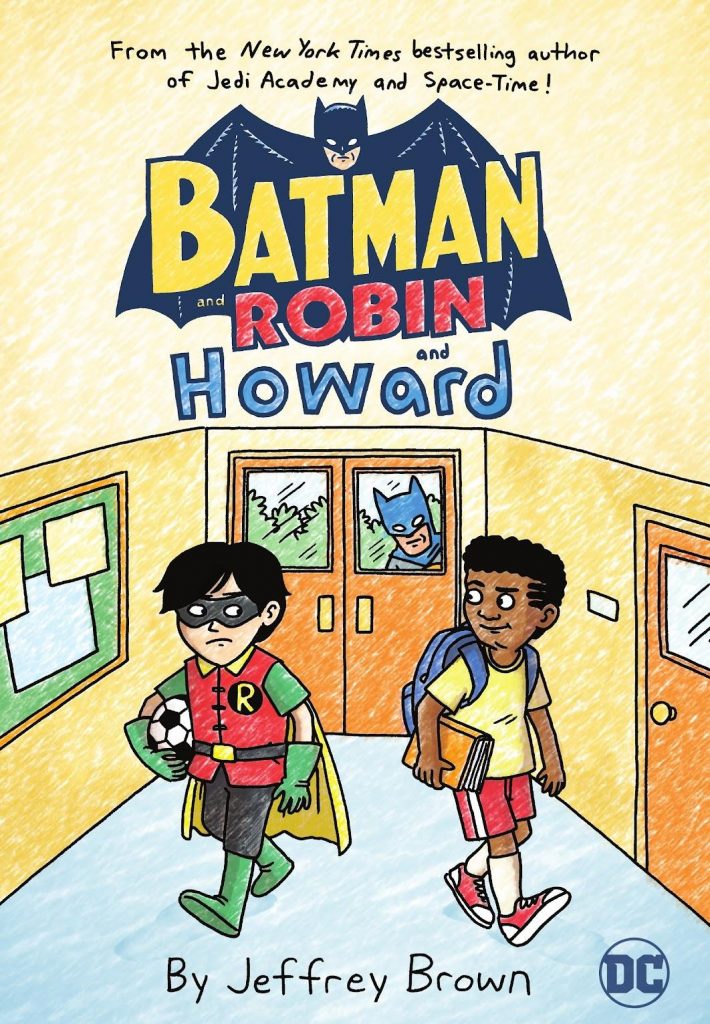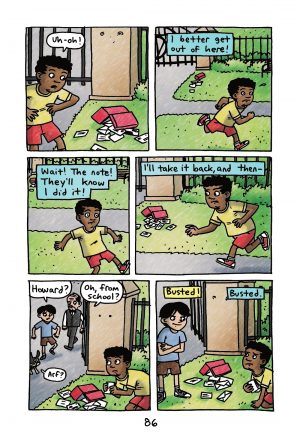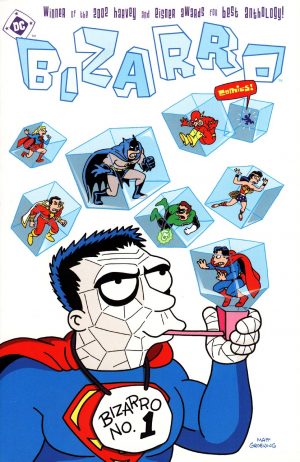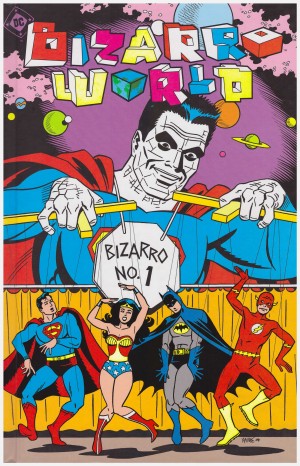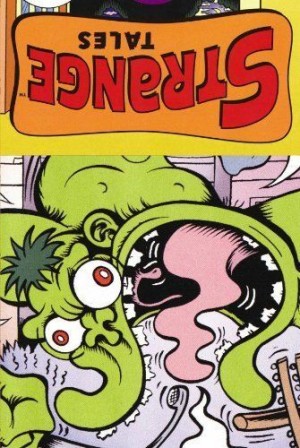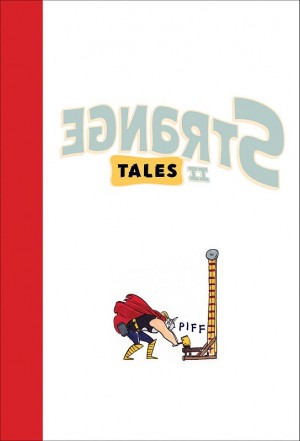Review by Frank Plowright
When considering the vast creative pool known for their comics in the early 21st century, Jeffrey Brown isn’t the first name that would come to mind to produce a young adult Batman graphic novel. Yet moving from painfully confessional autobiographical work to the widespread genre appeal of Star Wars gags shows Brown’s versatility, and don’t we all want our graphic novels to have a unique perspective? Brown certainly possesses that.
While Brown’s version of the old Batman logo graces the cover, it’s Robin who’s the greater focus, or Damian Wayne, to be precise. Bruce Wayne decides Damian would benefit from attending a regular school, and that’s where Howard enters the picture. He’s a good kid, bright and considerate, and when Damian arrives the sympathetic Howard considers the awkwardness of arriving at a new school, and befriends him, but it’s not an easy ride. Brown tones down some of Damian’s more obnoxious personality traits from the adult Batman line, but still portrays him as a show-off and know-it-all with little time for day to day pleasantries. It’s precisely the attitude his father hopes to change by having him mix with normal children.
Brown always keeps his art simple, and that ensures clarity for younger readers, who’ll also be attracted by the bright colours, but compared with artists working on other titles in DC’s younger readers line his limitations show. The viewpoint rarely changes from front and central. The benefits are the charm of his simply drawn Batman wandering through schoolrooms and gradually growing facial hair.
After a reckless scene at the beginning, it’s almost halfway through before Damian is again in his Robin costume, and then only briefly. It’s because Brown approaches a Batman story the same way he approaches his autobiographical material, lingering long on the ordinary, and it’s a technique that isn’t punchy enough for a different audience. Possibly also failing that test, but having greater offbeat charm for adults, are his interludes with Batman, gently poking fun at his activities and having Batman wonder if his armpits smell after being held captive for some time.
Batman being missing becomes crucial to Damian and Howard’s friendship, which may break a comics taboo, but would be entirely logical in the real world. It’s a lesson in sharing concerns when they become too great. It’s also interesting seeing football (European variety) used as subplot throughout, something rare in American material, and the subject of a great spread in the back featuring Batman’s villains.
In places Batman and Robin and Howard is quirky and fun, but it’s short of pace for a younger audience.
